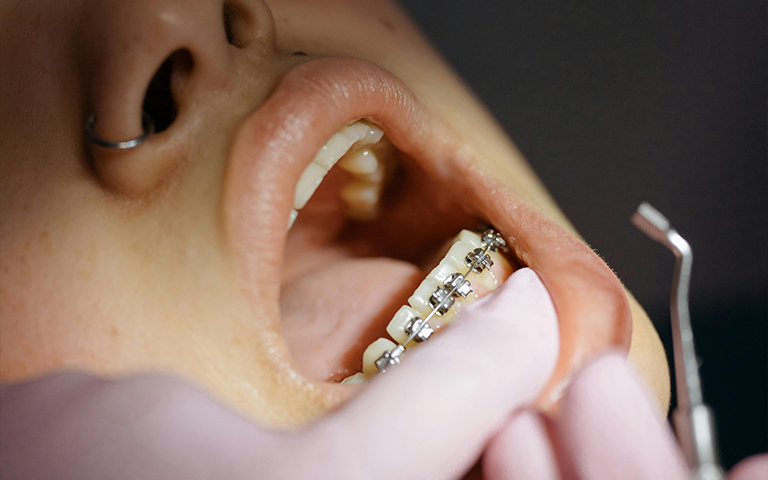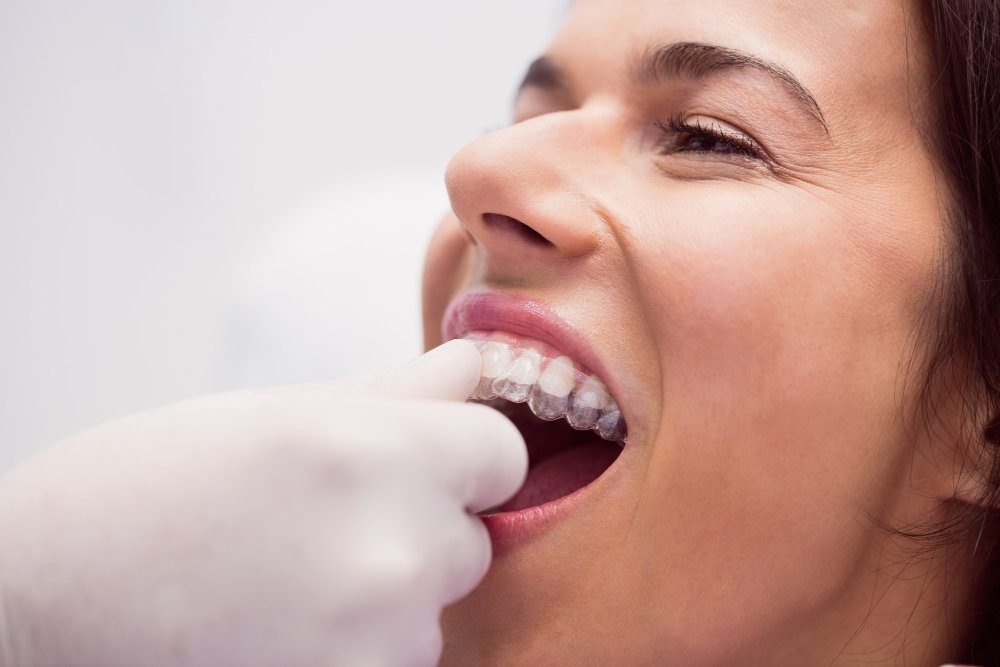Ever wondered which type of braces suits your smile best? Dental braces help straighten crooked or crowded teeth and correct bite issues with gentle, consistent pressure.
There are different types of dental braces available, from traditional metal braces to discreet options like clear aligners and Invisalign. Each type of braces works differently to move your teeth, improving both your appearance and oral health.
What are dental braces?
Dental braces are orthodontic devices that gently move your teeth into better alignment. They correct crooked teeth and bite issues by applying steady pressure over time. Braces come in several forms, including metal braces, ceramic braces, lingual braces, and clear aligners such as Invisalign.
Braces do more than improve your smile, they also enhance how your teeth fit and function. Their key purposes include:
- Improving teeth alignment and bite function
- Supporting better oral hygiene
- Reducing uneven wear, jaw pain, and chewing problems
Orthodontic treatment helps correct alignment and bite issues that affect comfort or confidence. You may need teeth braces if you have:
- Crooked, crowded, or gapped teeth
- Overbite, underbite, or crossbite
- Difficulty chewing or cleaning teeth properly
- A desire for a straighter, healthier smile
Different types of dental braces
Orthodontic treatment offers several types of dental braces to suit different needs, ages, and budgets. Below are the most common kinds of dental braces and how they work.
Traditional metal braces

Traditional metal braces are the most common and reliable type of dental braces. They use stainless-steel brackets and wires to gently move teeth into the right position. Modern designs are smaller, more comfortable, and less noticeable than before.
Metal braces are strong, effective, and ideal for complex orthodontic issues. They’re also more affordable than other types of dental braces. However, they’re quite visible and need careful cleaning to maintain good oral hygiene.
Despite these drawbacks, traditional metal braces remain one of the most effective and dependable orthodontic treatments available, especially for complex dental cases that require strong, consistent control of tooth movement.
Ceramic braces
Ceramic braces work the same way as traditional metal braces but use tooth-coloured or clear ceramic brackets for a more discreet look. They blend naturally with your teeth, making them a popular choice for adults and teens who want less noticeable treatment.
These braces provide effective tooth movement while maintaining a more aesthetic appearance. However, ceramic brackets are more fragile than metal ones. While the brackets themselves are highly stain-resistant, the elastic ties (rubber bands) used to hold the wire in place can stain if not cleaned properly. They may also cost slightly more due to their material and design.
Ceramic braces are best suited for patients who value appearance during treatment but still need the reliability of fixed braces.
Self-ligating braces
Self-ligating braces look similar to traditional metal braces but use a built-in clip instead of elastic bands to hold the wire in place. This design allows teeth to move more freely with less friction and pressure.
They often require fewer dental visits and make cleaning easier, improving overall oral hygiene. Patients also experience less discomfort as the braces adjust gently over time. However, they may cost more and aren’t suitable for every orthodontic case.
Self-ligating braces are ideal for those wanting efficient, low-maintenance treatment with shorter adjustment appointments.
Lingual braces
Lingual braces are similar to traditional braces but are attached to the back surfaces of your teeth, making them completely hidden from view. Each bracket is custom-made to fit the shape of your teeth, offering a discreet way to straighten your teeth.
They deliver precise results and are ideal for patients who prefer invisible treatment. However, they can affect speech at first, feel less comfortable, and take longer to adjust.
Lingual braces suit adults and professionals who want effective orthodontic treatment without visible brackets.
Clear aligners

Clear aligners, such as Invisalign, use custom-made plastic trays to gently move your teeth into position. Each set of trays is replaced every few weeks to continue the straightening process.
They are nearly invisible, comfortable to wear, and can be removed for eating or brushing, making oral hygiene easier. However, aligners must be worn for 20–22 hours daily to stay effective and may not suit complex orthodontics.
Clear aligners are best for adults and teens seeking a discreet, flexible way to achieve a straighter smile.
Braces cost and care
The cost of dental braces depends on the type of braces, treatment time, and the complexity of your orthodontic treatment. Traditional metal braces are usually the most affordable, while ceramic, lingual, and clear aligners such as Invisalign may cost more.
Maintenance also varies. Metal and ceramic braces need regular cleaning around brackets and wires, while aligners are easier to manage, simply remove and rinse them daily.
Our experienced dentists and orthodontists, Dr. Polly Hing, Dr. Souchin Sam, and Dr. Benjamin Dang, will guide you in choosing the most suitable type of braces based on your budget, lifestyle, and dental care needs.
To book a consultation at Optimal Dental Care, you may contact our friendly team at:
- Location: Parkside 128 Glen Osmond Road, Parkside SA 5063
- Phone: (08) 8271 6322
Frequently asked questions
Are clear aligners as effective as traditional braces?
Yes. Clear aligners made from smooth clear plastic can straighten mild to moderate dental issues using gentle pressure on your teeth. They’re removable for cleaning but must be worn 20–22 hours daily for best results. For complex cases, your orthodontist may recommend traditional braces.
What are self-ligating braces and how do they differ from traditional braces?
Self-ligating braces use a small built-in clip instead of elastic bands to hold the wire in place. This design reduces friction, allowing your teeth to move more freely under gentle pressure. These braces can shorten visits and make cleaning easier while offering the same reliable results as traditional stainless-steel braces.
What is a retainer and why do I need to wear one after treatment?
A retainer keeps your teeth from shifting back after orthodontic treatment. It’s usually made from clear plastic or metal and is custom-fitted for your mouth. You’ll need to wear your retainer as advised by your orthodontist to prevent movement of your teeth over time.

